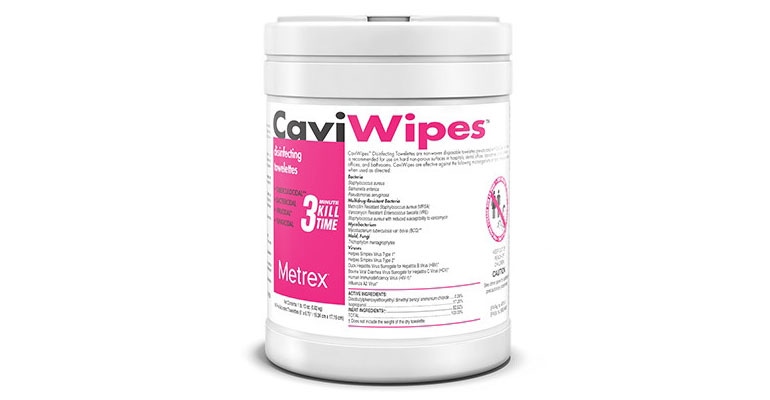In a joint study with Metrex, a maker of disinfection products, Solvay’s polymers met performance acceptance criteria for retention of impact strength, tensile strength, and color after repeated exposure to a range of disinfectants.
February 18, 2021

Healthcare facilities increasingly use very aggressive disinfectants to combat healthcare-acquired infections (HAIs) in general and, currently, to prevent spread of the SARS-CoV-2 virus. Medical device manufacturers, understandably, seek assurances from material suppliers that their products can withstand these harsh treatments. To allay such concerns, chemicals company Solvay has conducted a joint study with Metrex, a maker of broad-spectrum disinfection products, to determine the chemical resistance of its high-performance polymers.
Six Solvay specialty polymers were tested against three Metrex healthcare-surface disinfectants: CaviWipes, CaviWipes Bleach, and the new CaviWipes 2.0. The latter is fully qualified for the EPA’s rigorous Emerging Viral Pathogen claim against enveloped, large, and small non-enveloped viruses. The results revealed that Solvay’s Radel polyphenylsulfone (PPSU), Udel polysulfone (PSU), Veradel polyethersulfone (PESU), Ixef polyarylamide (PARA), Kalix high-performance polyamide (HPPA), and Amodel polyphthalamide (PPA) polymers all meet performance acceptance criteria for retention of impact strength, tensile strength, and color after repeated exposure to Metrex disinfectants. On average, all six Solvay materials exhibited over 90% retention of impact and tensile strength and a Delta E color difference of less than 2, said Solvay.
“We continue to enhance our surface disinfectants to meet new healthcare challenges, such as those created by the COVID-19 pandemic, across the entire Infection Prevention Circle of Care,” said Jesiska Tandy, Lead Material Science Engineer at Metrex. “We partnered with Solvay to evaluate the effects of these next-generation disinfectants on a range of specialty polymers, which had impressive results. The study clearly illustrates how our two companies are working together to help medical device manufacturers make better-informed material choices, and how we are helping hospitals derive the greatest value from their equipment while protecting patients and staff.”
About the Author(s)
You May Also Like


